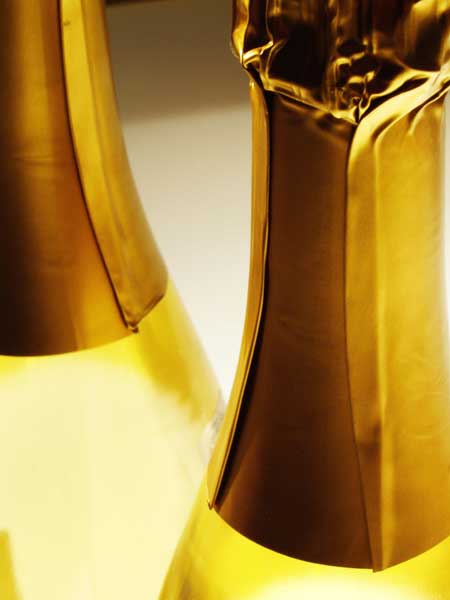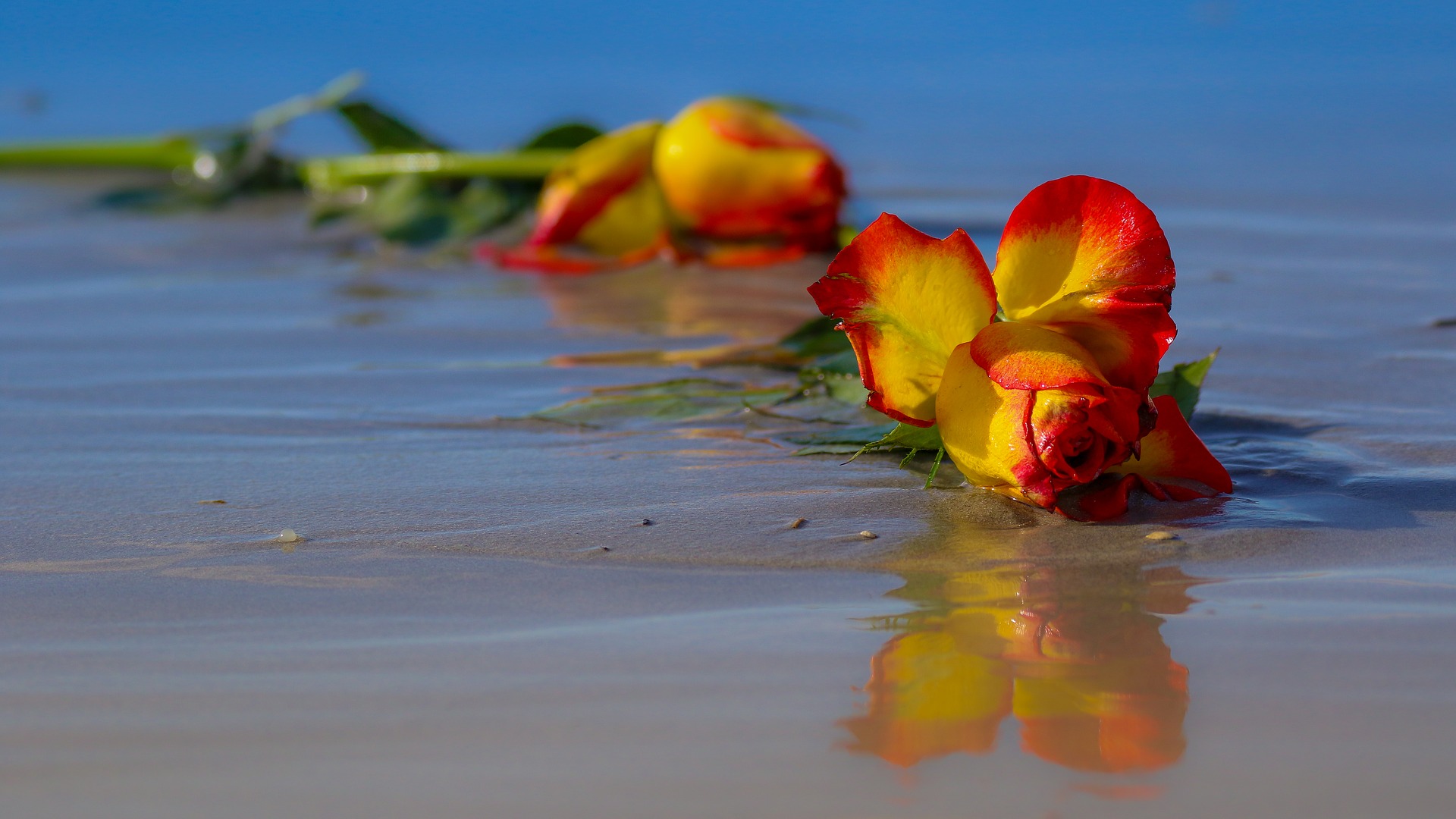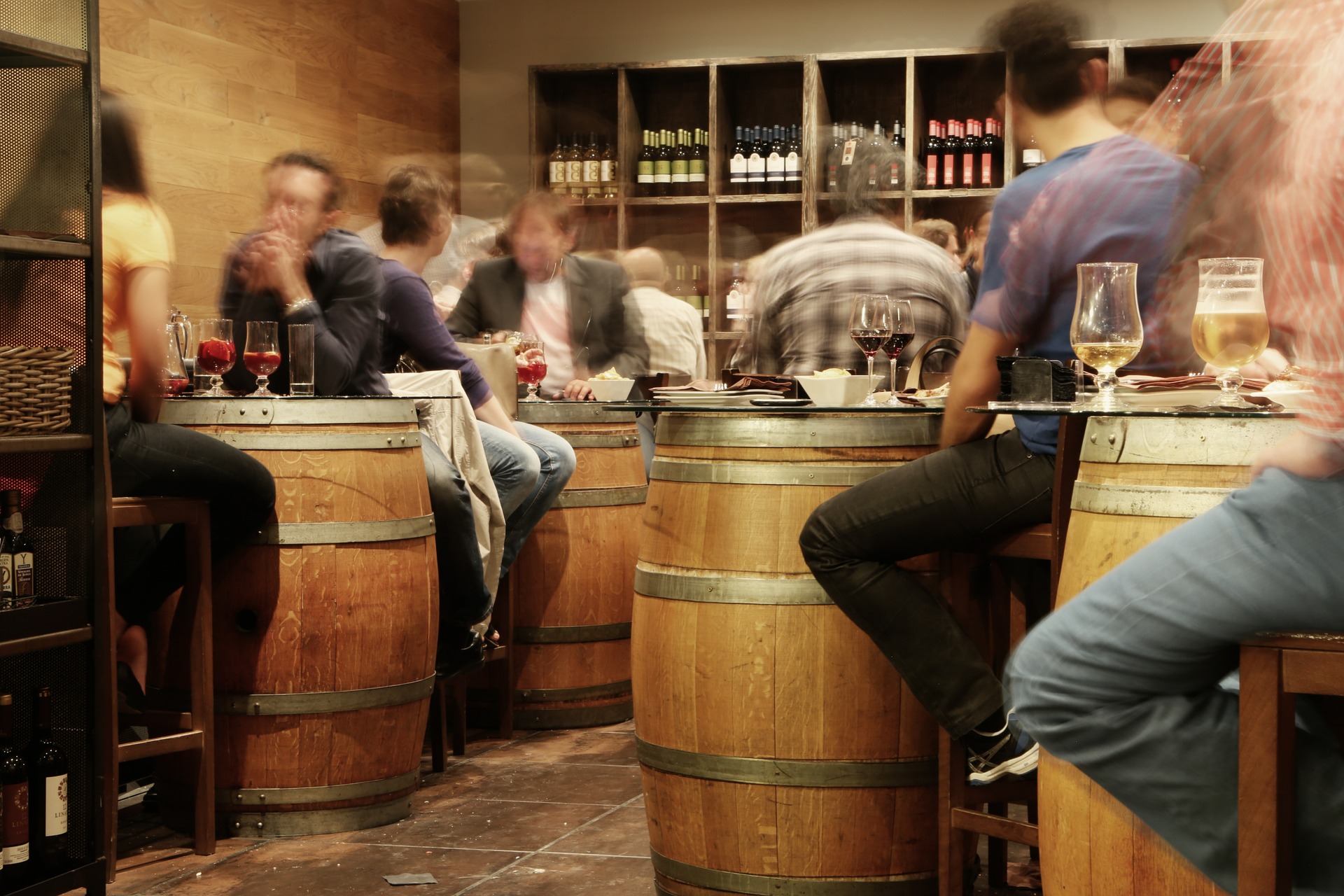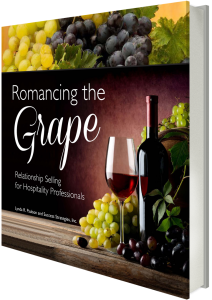Wine Facts, Benefits and the Bridges Between Them
People don’t buy wine because it was aged in barrels for 24 months; they buy because it tastes exceptionally smooth to them. People don’t buy wine because it’s a blend of 50% cabernet sauvignon, 20% cabernet franc, 18% merlot, 6% petite Verdot and 6% Viognier; they buy because the unique blend makes them feel fantastic and thinking it’ll pair perfectly with a dinner menu they’re planning.
We don’t buy the facts; we buy the benefits related to those facts. Or, more colloquially: facts tell, benefits sell!
In the wine business, we’re selling the ambiance, the lifestyle, the romance of country living elegantly. For many, wine has different meaning: For the well-to-do, it’s often a status symbol. For exhausted moms, it’s an escape or a few minutes of sanity with girlfriends. For others, it may be a reminder of a first date, anniversary, honeymoon, or other romantic occasion they hold dear.
Find the events, emotions and thoughts that connect with your guests’ daily lives and you’ll have the raw material to connect your wine with their lives.
Let’s run down a few facts associated with wine often heard in tasting rooms:
Wine Facts Heard in Tasting Rooms
- Cool evenings and hot, sunny days
- Two years in new French oak
- Volcanic-based, gravelly soil
- Planted in tight rows
- Extra-long hang-time
- Youthful vines, old vines
- 2-2.5 tons per acre
- Organic, biodynamic
- Dry farming

Sound familiar? Have you ever mentioned these characteristics or activities that take place at your winery by themselves without explaining why they might be important to your visitors?
To the wine-educated visitor, they’ll know the effects of dry farming on the finished wine. But to the wine neophyte, you might as well be speaking Greek to an English-speaker.
STEP ONE – Getting to Know You
Before you can begin discussing the facts and benefits of your wines with guests, find out how wine-knowledgeable your guests are:
- Is this your first time to Napa?
- Have you been here before?
- Are you visiting several wineries on your visit?
- Any particular wine you already know you like?
Get them talking about preferences. If they’re new to wine or your region, they’ll let you know if you begin inquiring along those lines.
If any of their answers are along the lines of: “We’re club members,” or “We visit the area every summer,” or “We’ve had your wine back home in Iowa several times and wanted to get a look for ourselves,” you’ll know they have some modest knowledge. But you’ll have to probe further to learn preferences and wine knowledge.
While you may get the above answers, that doesn’t mean they’ll have any idea of the effect of “100% malolactic fermentation with 18 months on new French Oak” on the wine. Be sure not to leap into jargon without ascertaining what level of knowledge your guests are at.
STEP TWO
Keep your inquiries and information brief and concise. While probing for guests’ knowledge use only two or three descriptors of the wine to determine if they’re keeping up with you and interested in this information:
“Our Sauvignon Blanc is well-known for its crisp and citrus notes on the palate. What do you think?”
Your guests may parrot back that they’re tasting the same thing. But they may also add, “I get that. What makes it so crisp?” – a definite hint they’re unfamiliar with the terminology, and effect, of acid in wine.
STEP THREE – Connecting the Benefits
On the left half of a sheet of paper, write down a handful of facts you use most often to describe your wines to guests, leaving the right half blank. (We’ll fill it in shortly.)
Next, begin writing down the benefits associated with each fact next to the fact in the right half.
BENEFITS
Here are a couple of examples how they may look:
- Cool evenings and sunny days = produce an expressive, aromatic and complex wine. Luscious and refreshing!
- Two years in new French oak = bring out a flamboyant and intense black cherry concentration and velvety smooth tannins.
If you can’t think of the corresponding benefit to one or more facts on your list, best to leave them out of your guest discussions, and/or discuss the would-be benefits with your winemaker or manager to learn.
Now you know what the results of “cool evenings and sunny days” do for the vines. But how do you convey that to your guests?
BRIDGES
Bridges are the key ingredient to connecting with guests. It’s as if you’re translating facts in Greek into English (or whatever native language you are using) for your guests to understand.
This requires a few, key phrases that serve as “bridges” to what they are understanding. Simply put: fact – bridge – benefit. Examples:
- “Which means”
- “Which means to you”
- “You will like (love) that because”
- “I tell you that because”
- “Our winemaker does that because”
- “That is significant because”
Practice using bridges in all your guest presentations. You’ll find your ability to connect with visitors increases exponentially using this method.
If you find yourself beginning a story with winery facts but unable to link, or bridge, that story to benefits guests will understand, you will have uncovered your own inability to understand the jargon. Practice with your manager or other associates until it feels natural to you again.
STEP FOUR – Nailing Down Interest
While “bridges” are great for explaining benefits to visitors, they don’t let you know if they are important to the customer. For that, you’ll need to probe further to ascertain benefits’ importance to your guests:
- “Is that something you like in a red blend?”
- “Is that a style you like to serve . . . to drink?”
- “Would that be important to you?”
- “Do you like that style of Sauvignon Blanc?”
Answers to these questions can lead to solid indications guests may be ready to buy or place an order. They may respond, “I love this red blend!” or “I think the stainless steel tanks are actually not the style I like. I prefer a lot more vanilla and oak.” Both answers give you indicators of their palate preferences and buying potential.
Continue asking questions (without coming off as an interrogator!) to guide guests through the discovery phase of wine tasting to ascertain their tastes and interest in your wines.
CLARIFY TO CLOSE IN ON THE HOME STRETCH
With each new answer to your naildown questions you get closer to determining guests’ buying interest. You may receive confused looks, furrowed eyebrows and other clear facial expressions of some misunderstanding or doubt.
Some confusion or doubt can easily be dispelled with a clarifying comment:
- “I point that out to show you that . . .”
- “Have you ever opened a wine and noticed a musty smell? We avoid that altogether by . . .”
- “This Sauvignon Blanc is affordable, so it’s great for parties.”
Further, clarifying information may be all that’s needed to close the sale. You may see an expression of “Aha! I’ve got it!” in response on their faces. Or, a follow up question, “Oh, tell me more about how the winemaker chooses her barrels,” indicating a stronger connection developing with the wine.
Other clarifications that may nudge your guests into club members or raving fans might be information that focuses in on the wine’s uniqueness.
STEP FIVE – Conveying the Unique Selling Proposition
Although the length of time spent at each winery has increased by visiting guests, they remain impatient to know why they should be patronizing any one particular winery versus another. Therefore, it is crucial to convey to your guests what makes your winery different from the myriad others in wine country.
In marketing terms, this is known as the Unique Selling Proposition (USP). But as we’ve already established, our guests don’t want to be sold to, they want to buy…on their own terms.
The USP is simply what makes your winery, and wines, unique. If this information wasn’t conveyed to you in your initial training, you can often find it in the verbiage shown on your winery website. If not clear, discuss the USP with your manager or the winemaker.
- Has your winery been in the same family for generations? What is their story?
- Are your wines exclusively all estate wines, grown and produced entirely under control of your winery?
- Has your winery won a number of prestigious awards or reviews?
- Is your winery the only one offering __________________?
- Is your wine club or allocation list coveted for _______________?
These are all crucial pieces of information to weave into your conversations with guests, ensuring they know what makes your wines unique and special.
COMPETITION
The opposite of uniqueness is being one of the pack – not special. Winery guests often spend much time in their own minds trying to figure out which wines are targeted to the masses versus those targeted to a few. Are your wines regularly available at retailers across the country? Or, are your best wines sold exclusively through the winery and wine club?
Guests like to know who your competition is. While you may feel uncomfortable talking about your competition, bear in mind that every winery is unique in some way. It’s your job to draw the distinctions between yours and those most similar.
Unlike many businesses who fear losing business to the competition, the wine tasting business benefits from promoting the competition: “Mrs. Jones, if you love our Rhone varietals, you may want to visit the tasting room at ________ which also makes delicious Rhone-style wines.”
This willingness to share positive information about your competitor will have a positive effect for all. Mrs. Jones is most likely to buy your wine for your willingness to share information about competition honestly, particularly if she is a fan of Rhone-style wines. Kindness is long-remembered and appreciated, increasing the likelihood Mrs. Jones will join and stay with your wine club.
She is also likely to mention your referral to the hospitality professional at the winery you recommend for her to visit, increasing the probability the professional will reciprocate when they receive visitors of similar tastes.
Bottom line: You can never know too much about your competitors’ wines and tasting experiences. Try them on your day off. You may find new personnel to meet who will happily refer you to future guests when they visit.
STEP LAST – Closing the Wine Sale
Nowhere do the facts and benefits of wine become most palpable than in food and wine pairings. Should you have a foodie as your guest, discussion of which one of your wines goes with paella will be infinitely easier with a shared vocabulary: “This rose is one of favorite wines to pair with ___________ because the crispness perfectly compliments the spicy notes in the ______________.”
If you’re a foodie yourself, you will have found a kindred spirit. If you’re not a foodie, it may take more work for you to understand and convey what dishes pair well with your wines to your foodie guests.
Most importantly, for many foodies, it takes little encouragement to close the sale when you can find common ground to discuss about recipes and pairing suggestions that resonate with one another.
Facts and benefits that can be easy to convey to guests about your wine in relation to food include:
- “I think you’ll love how our Sauvignon Blanc goes with the Asian dinner menu you’re planning because it compliments the spicy flavors so well, making it quite refreshing.”
- “My wife and I just opened a bottle of this cabernet a couple of weeks ago for a long-planned dinner. We couldn’t believe how well the blackberry notes and tannins married with the steak au poivre.”
- “Because only 50 cases were made of this wine and the vineyard was replanted after this vintage, my husband and I snatched some up so we didn’t miss out. We plan to open a bottle on our anniversary for the next 10 years to see how it’s evolved. They’re all once in a lifetime experiences.”
Now that you have your guests on the cusp of placing their order, it will take but a minor nudge to get them across the finish line.
IN THE BUYING MOOD
Many consumers have holes burning in their pocketbooks. They’re just itching to buy, buy, buy! All you need to do is capture that buying mood’s benefits:
- “Shall we fill up this six-bottle box?”
- “By buying two bottles today or joining our wine club, we can waive the tasting fee (only if management agrees; not all wineries offer this). How about one to enjoy right away and two to lay down? Only one? (only two?)”
- “How about a couple extra for gifts?”
My favorite response to the single-bottle purchase: “Really? Only ONE bottle?”
This article is part of the email Relationship Sales Success Series. It provides a step-by-step guide to improving wine sales and wine club sign ups. While it focuses upon techniques for those working winery tasting rooms, the principles of great sales skills can apply to any industry. Sign up for the series here.





